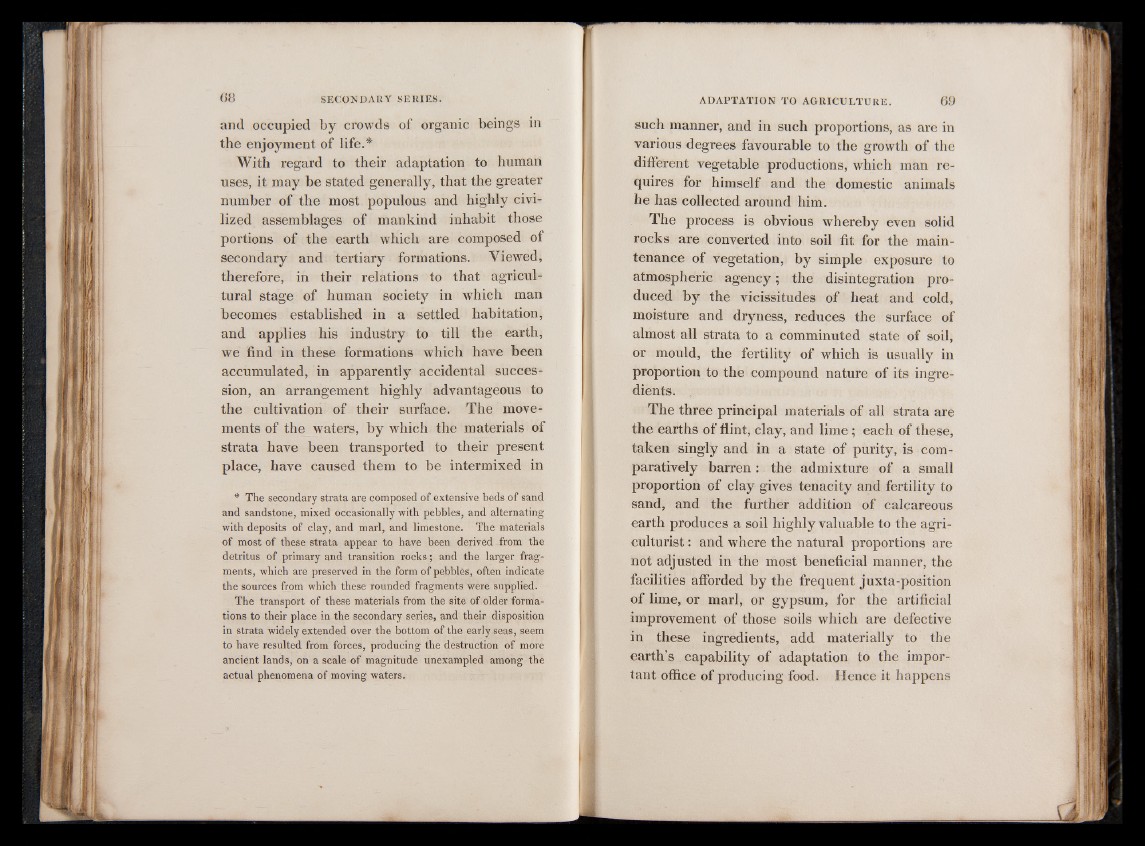
and occupied by crowds of organic beings in
the enjoyment of life.*
With regard to their adaptation to human
uses, it may be stated generally, that the greater
number of the most populous and highly civilized
assemblages of mankind inhabit those
portions of the earth which are composed of
secondary and tertiary formations. Viewed,
therefore, in their relations to that agricultural
stage of human society in which man
becomes established in a settled habitation,
and applies his industry to till the earth,
we find in these formations which have been
accumulated, in apparently accidental succession,
an arrangement highly advantageous to
the cultivation of their surface. The movements
of the waters, by which the materials of
strata have been transported to their present
place, have caused them to be intermixed in
* The secondary strata are composed of extensive beds of sand
and sandstone, mixed occasionally with pebbles, and alternating
with deposits of clay, and marl, and limestone. The materials
of most of these strata appear to have been derived from the
detritus of primary and transition rocks ; and the larger fragments,
which are preserved in the form of pebbles, often indicate
the sources from which these rounded fragments were supplied.
The transport of these materials from the site of older formations
to their place in the secondary series, and their disposition
in strata widely extended over the bottom of the early seas, seem
to have resulted from forces, producing the destruction of more
ancient lands, on a scale of magnitude unexampled among the
actual phenomena of moving waters.
such manner, and in such proportions, as are in
various degrees favourable to the growth of the
different vegetable productions, which man requires
for himself and the domestic animals
he has collected around him.
The process is obvious whereby even solid
rocks are converted into soil fit for the maintenance
of vegetation, by simple exposure to
atmospheric agency; the disintegration produced
by the vicissitudes of heat and cold,
moisture and dryness, reduces the surface of
almost all strata to a comminuted state of soil,
or mould, the fertility of which is usually in
proportion to the compound nature of its ingredients.
The three principal materials of all strata are
the earths of flint, clay, and lime; each of these,
taken singly and in a state of purity, is comparatively
barren : the admixture of a small
proportion of clay gives tenacity and fertility to
sand, and the further addition of calcareous
earth produces a soil highly valuable to the agriculturist
: and where the natural proportions are
not adjusted in the most beneficial manner, the
facilities afforded by the frequent juxta-position
of lime, or marl, or gypsum, for the artificial
improvement of those soils which are defective
in these ingredients, add materially to the
earth’s capability of adaptation to the important
office of producing food. Hence it happens